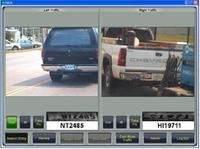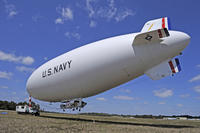-
Surveillance programs prompt start-up entry into privacy protection market
Revelations of the surveillance programs of the National Security Agency(NSA) and the U.K. Government Communications Headquarters(GCHQ) have sparked technical innovations, legal challenges, and pursuits of political reforms in the United States and Britain. While some established providers of secure e-mails have bowed out, new companies are moving in to offer consumers protection from prying.
-
-
U.S. Navy demonstrates UAV launch from submerged submarine

The U.S. Naval Research Laboratory (NRL) demonstrated the launch of an all-electric, fuel cell-powered, unmanned aerial system (UAS) from a submerged submarine. The successful submerged launch of a remotely deployed UAS offers a pathway to providing mission critical intelligence, surveillance, and reconnaissance (ISR) capabilities to the U.S. Navy’s submarine force.
-
-
More states move to limit LPR use
Law-enforcement units across the United States have been using license plate readers (LPRs) to monitor vehicles on public roads in order to locate missing individuals, investigate murderers, or track hit-and-run drivers. Privacy advocates are concerned with the wholesale storage of license plate information, and the fact that some municipalities have no limits on how long plate numbers can be stored. LPRs proponents are worried that the recent revelations about the NSA surveillance programs make it difficult for LPRs and other law-enforcement technology to get a fair hearing.
-
-
Wisconsin legislature considering restriction on LPRs

State legislators in Wisconsin have proposed a law to limit the use of license plate readers, drawing criticism from local law enforcement. Republican state Representative David Craig, the sponsor of the proposed legislation, said: “The vast majority of [the LPR] images are becoming nothing more than a database of the whereabouts of average citizens. The time has come to ensure the civil rights of citizens are not being violated, while also ensuring law enforcement has the tools needed to effectively enforce our state’s laws.”
-
-
Digital privacy services enjoying a surge in demand
Digital privacy services such as encrypted e-mail, secure instant messaging, and services that provide hard-to-track IP addresses are enjoying a surge in demand as individuals and businesses seek to protect information from spies and hackers in the wake of the National Security Agency’s (NSA) surveillance program revelations. These services promise security, but may also slow down computer performance. Moreover, they are not likely to deter those who are determined to hack into a particular computer network.
-
-
New search tool finds you, even in untagged photos
A new algorithm designed at the University of Toronto has the power profoundly to change the way we find photos among the billions on social media sites such as Facebook and Flickr. The search tool uses tag locations to quantify relationships between individuals, even those not tagged in any given photo.
-
-
Exploring “culture of surveillance” in the United States
Recent revelations that the National Security Agency (NSA) has been analyzing the communication records of all U.S. citizens have many talking about the topic of “mass surveillance” by the government. A University of Kansas sociologist who has been documenting what he calls our “culture of surveillance” for nearly twenty years argues, however, that these developments are part of deeper social and cultural changes going on for quite some time. Professor William Staples focuses his attention on the relatively mundane techniques of keeping a close watch of people — what he has dubbed the “Tiny Brothers” — which are increasingly present in the workplace, school, home, and community.
-
-
NSA surveillance leads to San Diego conviction of al-Shabaab supporters
Three Somali men residing in San Diego were sentenced to prison on Monday for aiding al-Shabaab, a Somali terrorist organization. The sentencing hearing in a San Diego federal court came four days after the men lost their bid for a new trial, requested after discovering that the charges were supported by evidence from theNational Security Agency’s (NSA) surveillance program.U.S. District Judge Jeffrey Miller denied the defense’s request to dismiss the NSA surveillance-generated evidence, saying the collection of the evidence did not amount to a warrantless search, and that while the agency’s surveillance programs were controversial, the protocol that was followed aligns with the law.
-
-
TCOM’s aerostat systems help U.S. Border Patrol

Several TCOM aerostat systems are being evaluated by Border Patrol agents in operational environments along U.S.-Mexico border. TCOM’s aerostat systems enable operators to view activity along the border. The system can typically remain aloft for two weeks to one month at a time. With operational altitudes of up to 5,000ft, the aerostats provide monitoring of thousands of square miles.
-
-
A civilian may be appointed to head the NSA
The Obama administration is considering appointing a civilian to lead the National Security Agency (NSA). If carried out, the move would install a civilian to lead the agency for the first time since its founding in 1952. Keith Alexander, the current director of the NSA, is a four-star Army general. He plans to retire next spring.
-
-
Ohio lawmakers want to limit use of drones by law enforcement
State lawmakers in Ohio want to limit the use of drones by law enforcement agencies in the state.A proposed bill would require law enforcement to obtain a search warrant before using drones. It would prohibit law enforcement from using drones to search for missing persons, locate illegal marijuana operations, or perform several actions officers currently handle with helicopter surveillance.
-
-
U.S. intelligence community seeking better face recognition biometrics
Intelligence analysts often rely on facial images to assist in establishing the identity of an individual, but too often, just examining the sheer volume of possibly relevant images and videos can be daunting. While biometric tools like automated face recognition could assist analysts in this task, current tools perform best on the well-posed, frontal facial photos taken for identification purposes. The Intelligence Advanced Research Projects Activity (IARPA), the research arm of the U.S. intelligence community, is seeking significantly to improve the current performance of face recognition tools by fusing the rich spatial, temporal, and contextual information available from the multiple views captured by today’s media.
-
-
Advanced police surveillance technologies pose significant privacy concerns

Much of the attention on surveillance in the media focuses on the National Security Agency (NSA), but there is not a lot of scrutiny on local domestic surveillance. In 1997, about 20 percent of police departments in the United States used some type of technological surveillance. By 2007, that number had risen to more than 70 percent of departments. Experts in criminal law and information privacy warn that the widespread use of advanced surveillance technologies such as automatic license plate readers, surveillance cameras, red light cameras, and facial recognition software by state and local police departments, combined with a lack of oversight and regulation, have the potential to develop into a form of widespread community surveillance, which ought to pose significant privacy concerns to law-abiding citizens.
-
-
Navy blimp returns to Maryland, Virginia, and D.C. skies today

The U.S. Navy’s only manned airship, a modified American Blimp Corporation A-170 series commercial blimp, will return to the skies of Maryland today, 12 November, to conduct week-long testing of experimental avionics systems.Results of this research may ultimately help protect forward deployed U.S. Army and U.S. Marine Corps troops around the globe.
-
-
DoD ends ambitious blimp program
The Department of Defensehas decided to end its Long Endurance Multi-Intelligence Vehicle (LEMV) project.The blimp was supposed to fly for as long as three weeks at a time, gather intelligence using 2,500 pounds worth of the most advanced cameras, sensors, and other intelligence technology. Operating at an altitude of 20,000 feet, the airship was designed to withstand enemy fire with its blend of fabrics, including kevlar. The Pentagon spent $297 million on the airship, but last month sold it back to one of the contractors which built it for $301,000.
-
- All
- Regional
- Water
- Biometrics
- Borders/Immig
- Business
- Cybersecurity
- Detection
- Disasters
- Government
- Infrastructure
- International
- Public health
- Public Safety
- Communication interoperabillity
- Emergency services
- Emergency medical services
- Fire
- First response
- IEDs
- Law Enforcement
- Law Enforcement Technology
- Military technology
- Nonlethal weapons
- Nuclear weapons
- Personal protection equipment
- Police
- Notification /alert systems
- Situational awareness
- Weapons systems
- Sci-Tech
- Sector Reports
- Surveillance
- Transportation
Advertising & Marketing: advertise@newswirepubs.com
Editorial: editor@newswirepubs.com
General: info@newswirepubs.com
2010-2011 © News Wire Publications, LLC News Wire Publications, LLC
220 Old Country Road | Suite 200 | Mineola | New York | 11501
Permissions and Policies
Editorial: editor@newswirepubs.com
General: info@newswirepubs.com
2010-2011 © News Wire Publications, LLC News Wire Publications, LLC
220 Old Country Road | Suite 200 | Mineola | New York | 11501
Permissions and Policies
